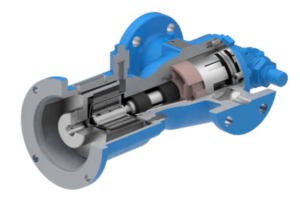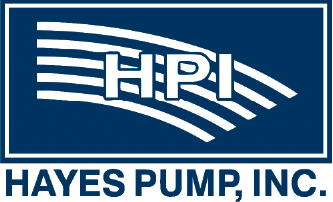Liquid Pump Lift & Head Explained
 There are a number of factors to consider before selecting the best type of pump for an application. Among these are the lift and head capabilities for the desired pump. Lift and head are both used to calculate or rate the movement of liquids vertically as opposed to the flow, that is, the quantity of liquid that a pump can move in a given amount of time. The volume of fluid moved over a given period of time, its maximum flow rate, is measured in gallons per minute, or simply, GPM. That number is not static, however. It is affected by the height that the fluid needs to be pumped. That, in turn, is determined by a pump’s head and lift.
There are a number of factors to consider before selecting the best type of pump for an application. Among these are the lift and head capabilities for the desired pump. Lift and head are both used to calculate or rate the movement of liquids vertically as opposed to the flow, that is, the quantity of liquid that a pump can move in a given amount of time. The volume of fluid moved over a given period of time, its maximum flow rate, is measured in gallons per minute, or simply, GPM. That number is not static, however. It is affected by the height that the fluid needs to be pumped. That, in turn, is determined by a pump’s head and lift.
When selecting a pump for industrial applications, the terms head and lift are frequently mentioned.
Head - How high a pump can raise a liquid vertically.
Lift - Capability of a pump to pull a liquid that is situated below a pump’s centerline.
Knowing the lift and head needs of a system the pump is intended for will ensure the correct pump for the job will be selected.
Head
Pump head is important to know when selecting a pump, as head performance, its range, and how it relates to pressure is one of the most important physical features of any pump. The pump head measures the power of a pump, as it relates to the impact of gravity on the vertical flow and the pressure (PSI) needed to “push” the fluid against the force of gravity. In short, as alluded to above, the term head references the height that a pump, under pressure, can raise a fluid such as water upwards to its vertical limit to discharge the fluid.
In determining head capability of a pump, three types of head measurements must be taken:
Discharge head
Vertical distance in which a pump can move a liquid - the highest point the liquid can be pumped.
Suction head
Measures the height between the source of the liquid being pumped and the pump itself - the distance it must be lifted up to reach the pump.
Total head
The combined height from the original liquid source up to the highest level to which the fluid can be pumped out of the point of discharge.
Lift
In order for a pump to “push” a fluid up to its maximum head and discharge it, it needs to be “pulled” from its source. This action requires a concept referred to as lift. That which affects suction head is the maximum suction lift needed for the pump to pull the fluid from beneath the centerline of the pump. Pump lift is the height from which a pump can “pull” a fluid up from its source. That said, the terms “suction” and “pull” are somewhat misleading.
Technically, it should be noted, lift is caused by a combination of atmospheric pressure that pushes, more than pulls, fluids within a vacuum, in combination with the friction within the system. Friction is caused by the type of liquid, its density, when moving through a hose. But friction also occurs from contact when the liquid flowing through a hose touches the interior wall of the hose. Nonetheless, when determining the needs of a pump for an industrial application, the maximum suction lift required to measure the pump’s suction head, is an important part of the overall equation in measuring the total head and a vital part of the selection process.
Using Lift and Head in Pump Selection
Understanding a pump performance requirements is key to ensuring the correct pump is selected for an application. Pump head and lift are part of the equation that determines a pump’s ratings. The other side of the equation being the volume and maximum flow, the GPM. A pump’s rating is typically expressed as “GPM at X feet of Head.” Keep in mind that higher head requirements will affect the time it takes to move the volume of fluids. For instance, though ratings vary depending on the type of liquid and its viscous density, the same pump to move a 100 GPM at 60 feet of head will discharge 60 GPM at 70 feet of head.
Pumps are useful tools found in many commercial, municipal, agricultural and residential environments. Whether for managing an area prone to flooding or the drainage of flooded areas, circulating clean water in and wastewater out, for irrigation, or distributing fertilizers and pesticides, even filling or draining pools and ponds, pumps serve a variety of purposes. Selecting the right pump for an application is crucial. In order to move and circulate the liquid through a system with ease, effectively pulling it from one end and pushing it out the other as needed, requires understanding the pump lift and head capabilities. Doing so ensures the right pump for the application is selected.




